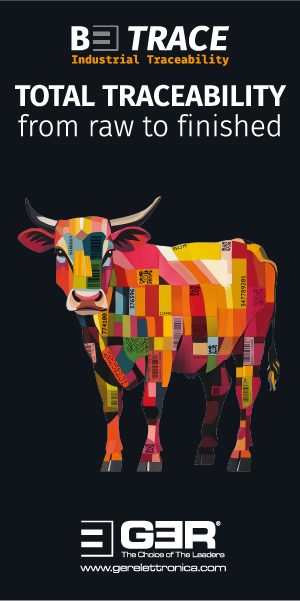Market Intelligence—10.09.24
Macroeconomics
Two weeks have passed in politics and business, with very little change overall.
In politics, war remains the dominant issues. Most people in Israel would like to see a negotiated solution to free the remaining hostages from the hands of Hamas. However, this would require a comprehensive ceasefire, and the current Israeli government does not appear to be ready for this at the moment. Nevertheless, the pressure from Israeli society and from Israel's international partners continues to increase. The goal of completely breaking Hamas' military power in Gaza remans from the Israeli perspective, but most experts believe that this is hardly achievable.
Developments in the war between Ukraine and Russia are also barely moving forward. Ukraine has secured its territorial gains in Russia and the Russian aggressors are also continuing their conquests in eastern Ukraine. There is no sign of any real progress that could change the war situation in the long term. The war is increasingly being carried inland to infrastructure targets, but strategic successes cannot be achieved in this way either.
Tensions between China and its neighbours are not easing either. Japan is complaining about violations of its airspace by Chinese military aircraft and there are also repeated minor clashes between the Philippines and China.
Otherwise, there were only political events of a very localised nature, but without any major impact on the global situation.
The financial markets have been somewhat livelier on the whole, and the stock markets in particular have been shaken up from time to time over the last two weeks. Recession worries are not abating and it is impossible to estimate the extent to which companies will be affected. In the automotive industry in Europe, and particularly in Germany, the structural problems are now becoming quite obvious. However, it is also true that a rapid shift away from the combustion engine is unlikely to succeed. More and more manufacturers, most recently Volvo, are postponing a complete move away from the combustion engine.
Inflation is continuing to fall and this is hardly surprising, as consumers in most countries are holding back on purchases.
In many cases, energy prices are falling and food prices have also normalised again. Increases in wages now pose the next immediate threat to price stability. However, this will only happen when consumers start to reduce their savings and spend more again. Despite a significant rise in real incomes, the events of the recent past are still lingering in people’s minds and the slowly developing fears of possible job losses are also playing a role. Extremely weak development in China is particularly problematic for global consumption.
Oil prices have also fallen significantly. On the one hand, this means that the oil-producing countries absolutely need the income from oil exports and, on the other, the markets do not expect a rapid recovery of the global economy and therefore an increase in demand for oil. For consumers in the northern hemisphere, however, this is good news ahead of winter.
The price of gold showed little change and continued to hover around $2,500 per ounce. Overall, the dollar is tending to weaken, with the markets assuming faster interest-rate cuts than in Europe, ending the last two weeks at around $1.11 against the euro.
Market Intelligence
The All China Leather Exhibition in Shanghai, which this year took place from September 3-5, traditionally marks the start of the more active winter half-year in leather production. For many from Europe and the US, it is also the start and the first major event after the summer holidays. Expectations are always high, and this year was no exception.
The hope is that new insights and information on further developments in the leather industry and the pipeline can be gained. In addition, there are of course meetings with business partners and many use the trip to visit their contacts in China before and after the trade fair.
In the case of raw material suppliers, most of these visits take place before the trade fair and so some arrive in Shanghai with their first experiences and can share these with others at the fair. In addition to the foreign visitors, the trade fair in Shanghai also plays a major role for the Chinese industry as a meeting place. And perhaps the importance of this is even greater nowadays.
Many who have been attending the fairs in China for many years have expressed the opinion that the All China Leather Exhibition is becoming more national than international. This was also evident in the number of overseas exhibitors. Hall E1, which traditionally accommodates international exhibitors from the leather industry and the raw materials trade, was only two-thirds occupied with stands. If you then take into account the space occupied by stands that are not necessarily related to the business, the number of really countable and paying exhibitors from abroad remained quite manageable.
While Hall E2 was occupied primarily by international chemical producers, the rest of the trade fair was then reserved exclusively for national exhibitors. In terms of the number of visitors, the annual meeting of the Chinese Leather Industry Association is also noticeable every year, as many Chinese leather producers take the opportunity to visit the trade fair at the same time. As a result, the number of people in the aisles was normal, with a good number of national visitors, better than one might have feared. As always, however, quality and quantity do not necessarily have to be the same.
Whereas in the past, discussions were mostly centred on the ups and downs of the raw materials market or on the question of who has or will get leather orders, where and how many, and sometimes on the question of which production sites might be preferred because the tanners had no doubts about the future of leather production, this time the question of how much leather will still be needed in the future was discussed more and more.
Of course, these discussions are not held in public and of course the positive and the hopeful are emphasised, but the fact that the topic is being taken seriously at all speaks for itself. Of course, leather production will not simply end and leather will continue to be produced for many years to come, but the conviction of the past that, sooner or later, there would always be enough demand to absorb the leather produced from the hides available has evaporated.
This also means that everyone has to ask themselves where and how they can then find their place in this changed environment. Those who have already spent some time travelling in China reported large stocks of semi-finished goods in many of the tanning centres. Most of the stocks are probably in northern China. At the same time, almost all leather manufacturers are complaining about a lack of orders, which means that there is little prospect of these stocks being reduced quickly. In the many clusters where leather has been or is being produced, more and more production is at a standstill and those that are still producing are trying to do so with the least financial effort. As an alternative, there are only a few large producers that are still running at full capacity and these are the ones that still buy in volume on the market for raw materials. What is missing is sufficient demand from the entire supply chain, especially from medium-sized players. This applies from raw goods to finished products.
At this point, it makes sense to talk about the situation in Chinese shopping streets and shopping malls. Much has already been said and written about the poor consumer sentiment. However, when you see it in reality in many cities, it is impressive. The names, brands and shops are still lined up door to door and all of them are open. However, there are hardly any customers to be seen anywhere and even at weekends there are more people in the corridors and streets, but always in front of the shops and not inside them. This applies to the luxury brands, but also to the many names represented in the middle and upper segments.
The pressure on earnings may not yet be so great for luxury brands, but if you look at the emptiness of shops where there used to be long queues, it would come as no surprise if others were to make similar decisions to one that Tiffany took recently. It will reduce the sales area in its flagship store because sales are weak. It is of course difficult in the luxury sector, as closures naturally do not fit in with the exclusive image of success that is supposed to be associated with the names and brands.
Conversations with sales staff in shops in China were often depressing, as they described this as the situation they have experienced for months now. In addition to the boredom and frustration, the fear of losing their jobs was of course also palpable in many cases. The question about the reasons was always answered in the same way: people no longer have enough money, are burdened by losses in the property sector or are saving because they have lost confidence in a positive income trend. A high level of unemployment among younger people in China naturally also plays a major role here. In short, the weakness of private consumption in China was easy to spot.
People are very cautious in expressing themselves, because the central government’s arm reaches very far and you have to have very private conversations to get all the worries and sometimes also the dissatisfaction explained.
If we leave China for a moment, the bad news from the German automotive industry last week could not be overlooked or ignored. We already reported in our last issue about the production cuts in the Mercedes S-Class. Everyone can now also read about the difficulties at the VW Group in the newspapers. Of course, many of these cars are no longer equipped with leather anyway, but overall the European automotive industry is still one of the main pillars of automotive leather production in Europe. Even if it has perhaps not yet been recognised by the public, there are already some automotive leather companies that have reduced a large part of their production. It is relatively unlikely that all of them will be able to survive this decline and the possibility of switching to other segments, such as shoe or furniture leather, is limited because the situation in these sectors is not much better.
The raw materials markets are not yet reacting particularly intensively. In addition to the fact that suppliers naturally seek to defend their prices, for obvious reasons, it is also the case that lower prices are not stimulating demand at the moment. This means that a significant further fall in the market would do more harm than good, as the value of the inventories that are held would then have to be adjusted to the falling prices. In many cases, of course, there is not much interest in this.
The usual principle, which used to be practised in China in particular, that cheap hides are the best insurance and basis for a successful future, can no longer be upheld, at least not at the moment. That is why significantly falling prices would be more of a problem than a solution. Many raw material prices are close to their historic lows and a further decline would probably mean that many types of raw material would no longer be processed by the leather industry. This is a situation that we already have in many countries around the world and has already become the standard for sheepskin and lambskin.
It cannot be said often enough: all markets always come back into equilibrium and if demand does not do the trick, supply will do it in the end. It will not be an easy time for those who are still sitting on significant stocks.
Not much has changed in terms of splits. The demand for suitable splits for suede production remains good, and that has everything to do with retro fashion. However, it is also true that less production of grain leather means fewer splits. The situation is difficult on the gelatine and collagen markets, which are suffering from overproduction in the case of many articles. The rapid expansion of capacity, partly in response to the problems in the leather industry, has simply led to too much supply, which has resulted in a significant drop in prices.
In the sheepskin market, there has been more than one notable change. A certain recovery in the demand for coarser wool has prompted some tanners in China to look again at the possibility of shearing the skins to obtain the wool. The calculations for this are still not really working out and it would hardly be possible to process skins for this purpose, but it would certainly be a solution to the problem of high volumes of stock for the time being.
After Shanghai, there is only one full week until Lineapelle in Milan (September 17-19). There are unlikely to be any major changes before then. In Milan we should see the significance of leather in the production of leathergoods, shoes, clothing and bags at the moment. Hope dies last and theoretically it could well be that, despite the generally pessimistic attitude of consumers, manufacturers and retailers will find the courage to challenge consumers with new and attractive products.
There are still many unanswered questions, such as the European Deforestation Regulation (EUDR), which comes into force on January 1, 2025. The way it is currently structured, it will not be possible to comply with it. Of course, nobody believes that there will be no more cattle slaughter in Europe from January 2, because the consequences would be completely unclear for the farmers and the animals. It remains the case that we have to plan for the future. The simplest and least problematic solution would be to postpone the implementation date for EUDR for the time being. Only those in Brussels will be able to find a practicable solution. Time is running out.
















